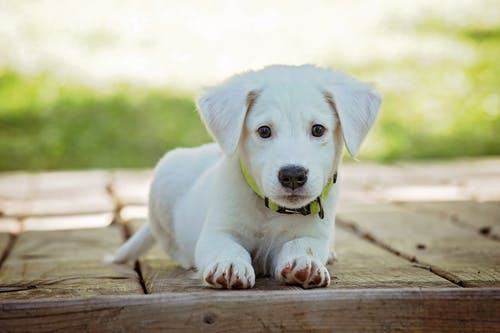Many eye diseases commonly cause tears, redness, and discomfort. Being aware of and identifying the root problem is essential to the health of your pet’s eyes because corneas and other ocular tissues could be damaged if not treated promptly. Pets with wrinkled or flat faces must be observed regularly for signs of tearing, squinting, discomfort, or discomfort. They could be more susceptible to developing eye problems.
The early detection of these issues could significantly reduce the chance of having more severe problems. But, many ophthalmic issues can occur anytime, so it’s not just the elderly dog to be concerned regarding the factors leading to impaired vision or loss of sight. In addition, all breeds of dogs are susceptible to the hereditary condition of blindness and other eye health issues.
To stop eye problems from worsening, examining for signs of discomfort or damage in the eye is crucial. It is always recommended to report your concerns to a veterinarian immediately, as eyesight and eye health loss could be signs of underlying medical issues.
Eye Problems in Pets
Here are a few of the most common eye problems that can affect pets, with some suggestions for handling. Of course, you may consider seeking a veterinarian ophthalmologist if your pet’s eye health concerns are serious.
Entropion
Entropion is the term used to describe this condition, which is more prevalent in cats than dogs. The hair of the eyelids of pets rubs across the eye’s surface, which causes discomfort and increases tear production, corneal ulcers, or scarring. Entropion is a common congenital disorder commonly seen when dogs have a lot of facial skin.
The crying and squinting are entropion signs often seen in puppies. Surgery is a possibility to correct the flawed eyelid anatomy by taking out a small part of the eyelid once the dog has grown.
Cherry Eye
Cherry eyes also referred to as prolapsed third eyelid gland, are rare in cats but quite common in dogs, especially in certain breeds. The nictitating membrane, which is the third eyelid, is present in dogs and cats and is located inside the lid’s lower part and is among these characteristics. The gland that produces the majority of tears that shield the eyes is situated.
The gland is typically concealed; however, weak ligaments could cause it to be able to pop out to rest upon the surface of the eye. Surgery is usually needed to create a more secluded space where the gland can relax, preventing recurring problems. Consult a specialist for more information about veterinary ocular procedures.
Cataracts
Cats may also develop cataracts due to diabetes, aging, genetic disease, or other medical conditions. Cats suffering from advanced cataracts are easily identified since the lens is usually straightforward but has an opaque, hazy cataract.
Your pet may have difficulty seeing if they suffer from cataracts, particularly at night. Cataracts block sunlight from reaching the back part of the eyes. Cataracts can increase pressure in the eye without surgery, which can cause the condition known as glaucoma. Visit a veterinary clinic for dog dental care.
Conjunctivitis
The mucous membranes referred to as conjunctiva can be found in your pet’s eyelids, on each side of the eyelid, and in the eyeball tissue. Conjunctivitis can cause eye irritation, inflammation, redness, and swelling.
Conjunctivitis may be caused by irritation, infection, and allergic reactions. A saline-based eye flush or antibiotic eye medicine will treat inflammation dependent on the root cause. Click this link for additional details.




